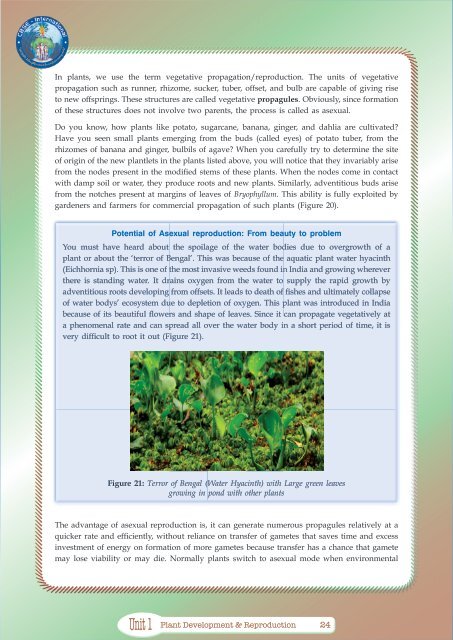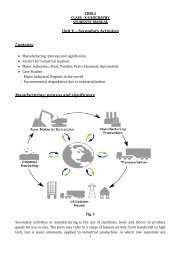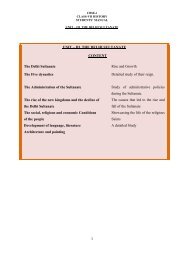PLANT DEVELOPMENT & REPRODUCTION - CBSE International
PLANT DEVELOPMENT & REPRODUCTION - CBSE International
PLANT DEVELOPMENT & REPRODUCTION - CBSE International
Create successful ePaper yourself
Turn your PDF publications into a flip-book with our unique Google optimized e-Paper software.
In plants, we use the term vegetative propagation/reproduction. The units of vegetativepropagation such as runner, rhizome, sucker, tuber, offset, and bulb are capable of giving riseto new offsprings. These structures are called vegetative propagules. Obviously, since formationof these structures does not involve two parents, the process is called as asexual.Do you know, how plants like potato, sugarcane, banana, ginger, and dahlia are cultivated?Have you seen small plants emerging from the buds (called eyes) of potato tuber, from therhizomes of banana and ginger, bulbils of agave? When you carefully try to determine the siteof origin of the new plantlets in the plants listed above, you will notice that they invariably arisefrom the nodes present in the modified stems of these plants. When the nodes come in contactwith damp soil or water, they produce roots and new plants. Similarly, adventitious buds arisefrom the notches present at margins of leaves of Bryophyllum. This ability is fully exploited bygardeners and farmers for commercial propagation of such plants (Figure 20).Potential of Asexual reproduction: From beauty to problemThe advantage of asexual reproduction is, it can generate numerous propagules relatively at aquicker rate and efficiently, without reliance on transfer of gametes that saves time and excessinvestment of energy on formation of more gametes because transfer has a chance that gametemay lose viability or may die. Normally plants switch to asexual mode when environmentalUnit 1 Plant Development & Reproduction 24








